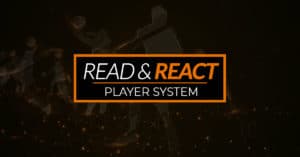NOTE: this is a follow-up post to Look in the Mirror (Part 1).
Most people postpone personal development in November and December and wait to make New Year’s Resolutions.
Most players postpone improving their game in February and March and wait to get better in the off-season.
But why wait? Why not get better now?

- Ball handling
- Shooting
- Passing
- Rebounding
- Defending
- Strength & Power
- Quickness & Reaction
- Agility & Movement
- Flexibility & Mobility
- Nutrition
- Conditioning
- Basketball I.Q.
- Leadership
- Teammate
- Work Ethic
Rate yourself on a scale of 1 to 10 for each category. This evaluation needs to be what youbelieve; not what your parents tell you, your girlfriend tells you or what some scouting service wrote about you. Once you have completed your ratings, schedule a time with your coach and ask them to fill out the exact same evaluation on your behalf. While they will be rather pre-occupied finishing out the season, if they care about you and your progress, they will make the time to do this.
How do the results compare? Any score you and your coach agree on is probably accurate. If both you and your coach believe your ball handling is an “8”, then it probably is. But what if you think it is an “8” and your coach thinks it is a “3”? Is it possible you think an aspect of your game is better than it actually is? Regardless, you should average out both scores and have a final rating for each of the categories. Then you should put them in descending order, meaning your highest scores (strengths) are at the top and your bottom scores (weaknesses) are at the bottom. This will help you prioritize what you need to work on… now… and during the entire off-season.
This evaluation will help clarify why you have (or haven’t) earned minutes this current season, what you need to do to earn more playing time next season and determine your ability to play at the next level (if that is a goal).
Players, for the rest of this season, spend 15-20 minutes before and/or after practice working on your game. Come in early and stay late, but continue to focus on team concepts and being a great teammate during practice.
Coaches, encourage your players to adopt this evaluation, and reinforce it by implementing a segment in to your remaining practices called “individual development.”
Put 5 to 15 minutes on the clock at some point during practice and let your players work on whatever they feel they need to work on. I guarantee this will be a very productive segment of practice and a great way to get ‘buy-in’ during the dog days of February.
For a few additional ways to keep practice fresh & fun in February, listen to this Hardwood Hustle Episode.
[divider]
Basketball Positions vs Spots
In this Full Timeout, Rick discusses the difference in basketball players designated by positions and spots. Position-less basketball is the future of basketball. In every play a player starts and ends in a spot, in the Read and React a player is constantly changing spots looking for scoring opportunities.








